Kiang Malingue is pleased to present at Art Basel Hong Kong a selection of recent artworks by Eric Baudart, Cho Yong-Ik, Chou Yu-Cheng, Ho Tzu Nyen, Brook Hsu, Ko Sin Tung, Lai Chih-Sheng, Liu Xiaohui, Liu Yin, Fabien Mérelle, Nabuqi, Homer Shew, Apichatpong Weerasethakul, Wong Ping, Hiroka Yamashita, Yeung Hok Tak, Samson Young, Yuan Yuan, and Zheng Zhou.
In the booth that is populated by more than 20 Jungle of Desire (2016) lucky cat figurines by Wong Ping, highlights include a series of new paintings by Chou Yu-Cheng, such as the large monochrome painting Origami #26 (2023) that fully conveys the sophistication of Chou’s new painting method, and the modestly sized Watercolor #24 (2021) that succinctly crystallises the essence of Chou’s recent painting practice. The irregularly shaped Water, Synchronous, Sediment, Substance, Flow, Diachrony, Color #4 (2020) also on view illustrates the numerous paths on which Chou has developed his surfaces of ‘gradual sedimentation.’
Recent artworks by Yeung Hok Tak depict the landscapes and lives of Hong Kong in a way that reminds one of traditional Chinese shanshui paintings and portraitures: just as humorous and vibrant as previous series but no longer nostalgic, the pictures that go with amusing stories explore the beauty of the local life today. Intermission (2023), along with Ferry-Go-Round II (2020) and Under The Red Sky (2020), demonstrates the artist’s insistence on the political aspect of life, and his recent fascination with representing different bodies of water.
Yuan Yuan’s Understory (2022) was the titular painting for his exhibition in Shanghai in 2022, testifying to the artist’s ever-deepening exploration of semi-enclosed space, chiaroscuro, and the physical act of painting as a labyrinth-building practice. ‘Understory’ is an ecological term that refers to the plants that grow beneath the forest canopy and above the forest floor, including various plants, shrubs, lichens and mosses. The branches and leaves that spread out from the top of the trees form a ‘roof’ called the canopy; only a few rays of sunlight can penetrate the canopy and rarely nourish the plants on the ground. Due to the lack of sunlight, the living organisms beneath become delicate, and the life span of the plants is therefore limited to only a few years. Divided horizontally into three sections, the composition of the painting is fundamentally religious; the restrained and cool colors carefully render a diverse, mysterious and fragile state of life.
Unlike previous Paint Cans works, Lai-Chih Sheng‘s recent Paint Cans_Titan Buff / Cobalt Blue (2023) and Paint Cans_N4 Neutral Gray / Mars Yellow (2023) focus on the logic of pairing, evoking, among others, works by Roni Horn and Vija Celmins. Further doubling this logic of pairing are two recent paintings made with bare hands, Orange 20230201 (2023) and Blue 20230116 (2023). Communicating with one another in color, scale and means, Lai’s object-paintings form an intricate network, reiterating the poetics of space the artist has explored over the years.
A selection of more than 8 recent paintings by Zheng Zhou reveals the rigour of the artist’s practice and his interest in handling a variety of subject matters: from the folkloric, the religious, the quotidian, the idiomatic to the animalistic and the monstrous. By imagining in Blood Moon (2022) a forest in which a concealed figure effectively ruptures the painted surface, and by staging a dark feasting scene in Human Nature Is Here To Stay (2020), Zheng Zhou shows that he is undisturbed by recent social and political events, and continues in his quest for rendering elegant or grotesque fantasies.
Presented at the Kiang Malingue booth is also Nabuqi’s fountain sculpture Bonsai (2021). It miniaturizes a functional public square fountain, demonstrating the artist’s interest in combining infrastructural and decorative elements. Downscaled and transposed indoors, it becomes an unlikely domestic fixture — just like the logic of cultivating bonsais. Bonsai corresponds actively to Nabuqi’s Fountain: Night Garden (2020) also on view in the ‘Encounters’ section. The latter as a large-scale fountain appropriates and reconstructs the image of the fountain—water pumps, tarps, steel frames, advertising banners—emphasising the restrained, anti-monumental nature of the cascade, transforming a majestic symbol of authority into a set of complex material relations.
Art Basel Hong Kong 2023 Eric Baudart, Cho Yong-Ik, Chou Yu-Cheng, Ho Tzu Nyen, Brook Hsu, Ko Sin Tung, Lai Chih-Sheng, Fabien Mérelle, Nabuqi, Wang Zhibo, Apichatpong Weerasethakul, Wong Ping, Hiroka Yamashita, Yeung Hok Tak, Samson Young, Yuan Yuan, Zheng Bo, Zheng Zhou
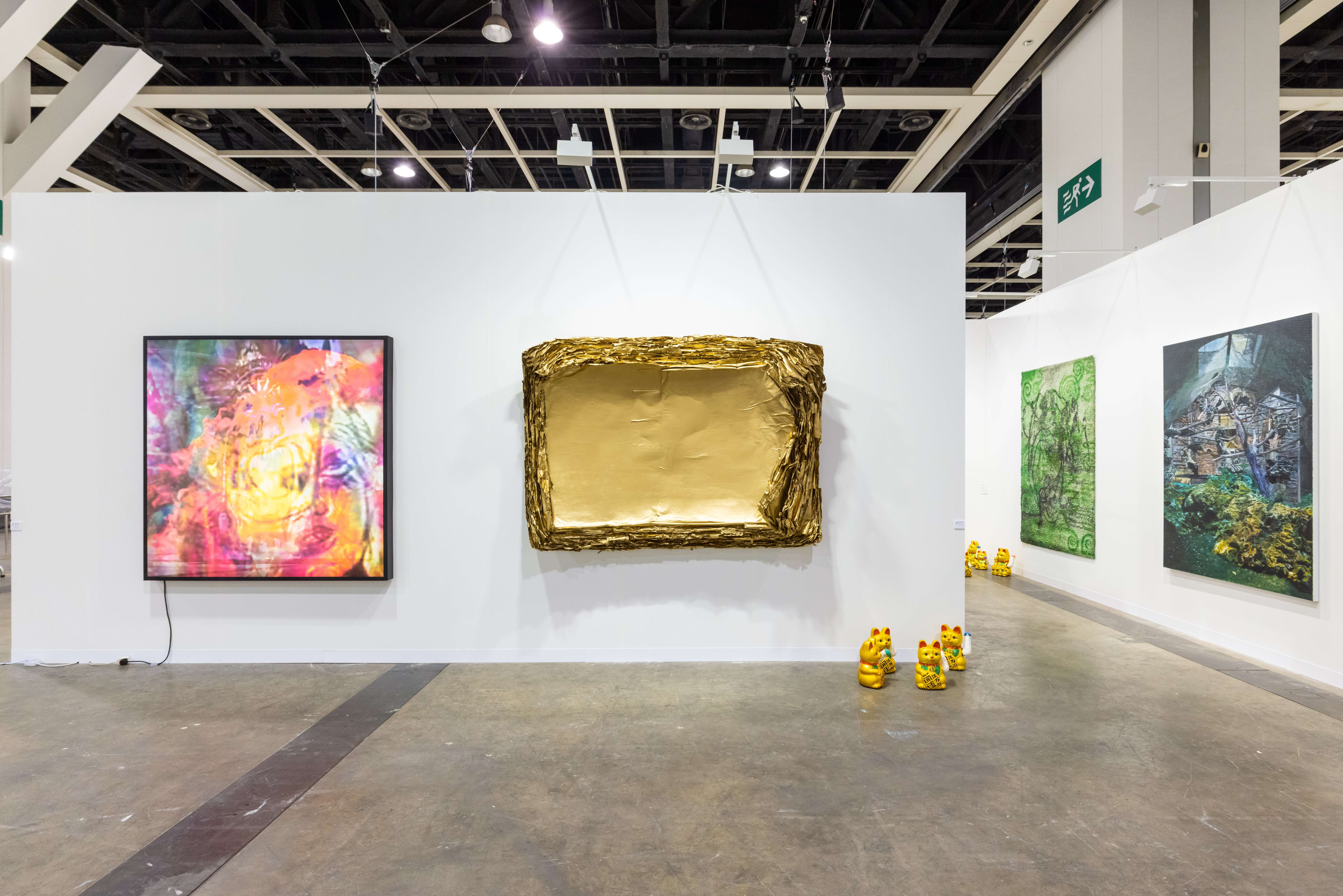
Photo by Wong Pak Hang
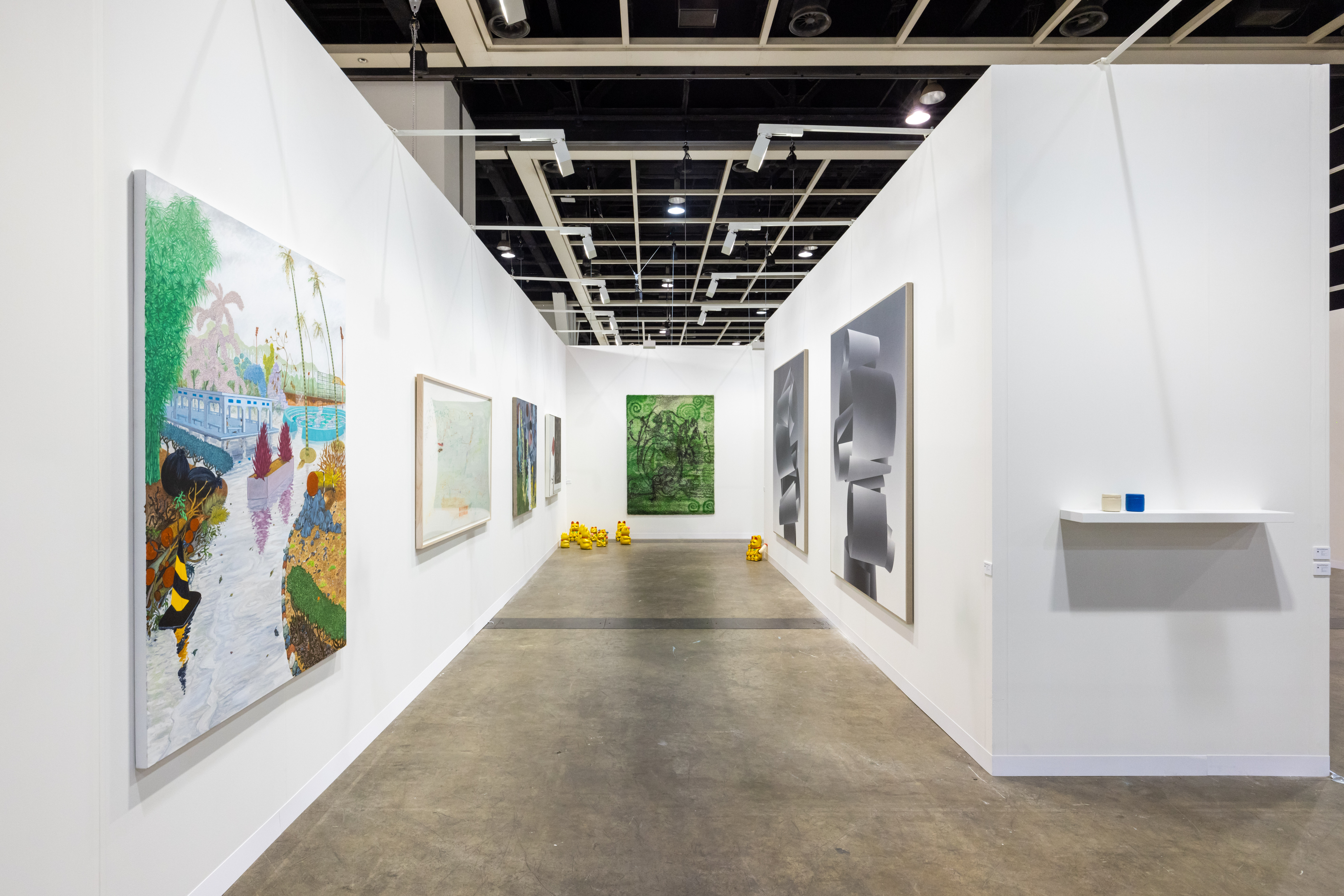
Photo by Wong Pak Hang

Photo by Wong Pak Hang
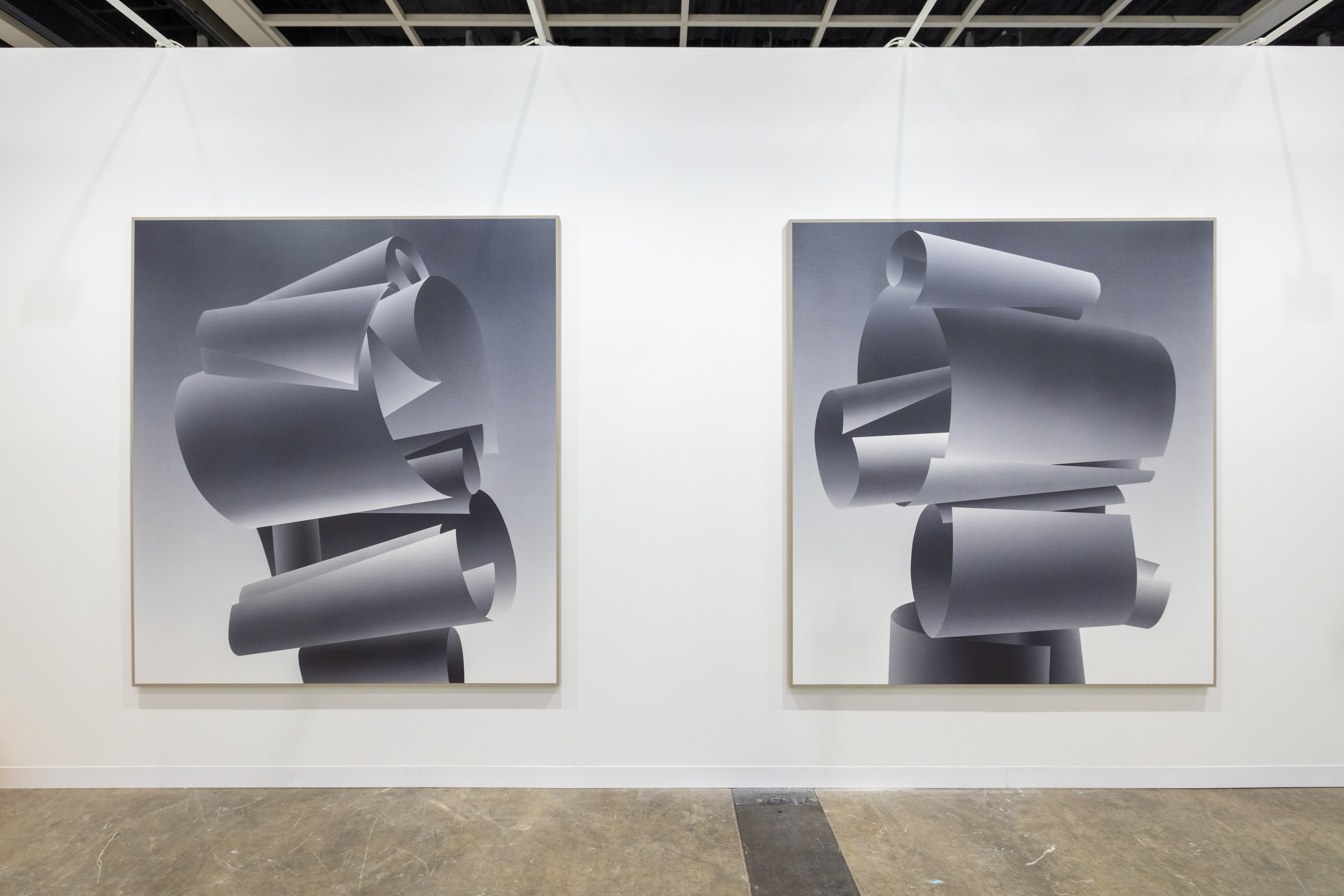
Photo by Wong Pak Hang
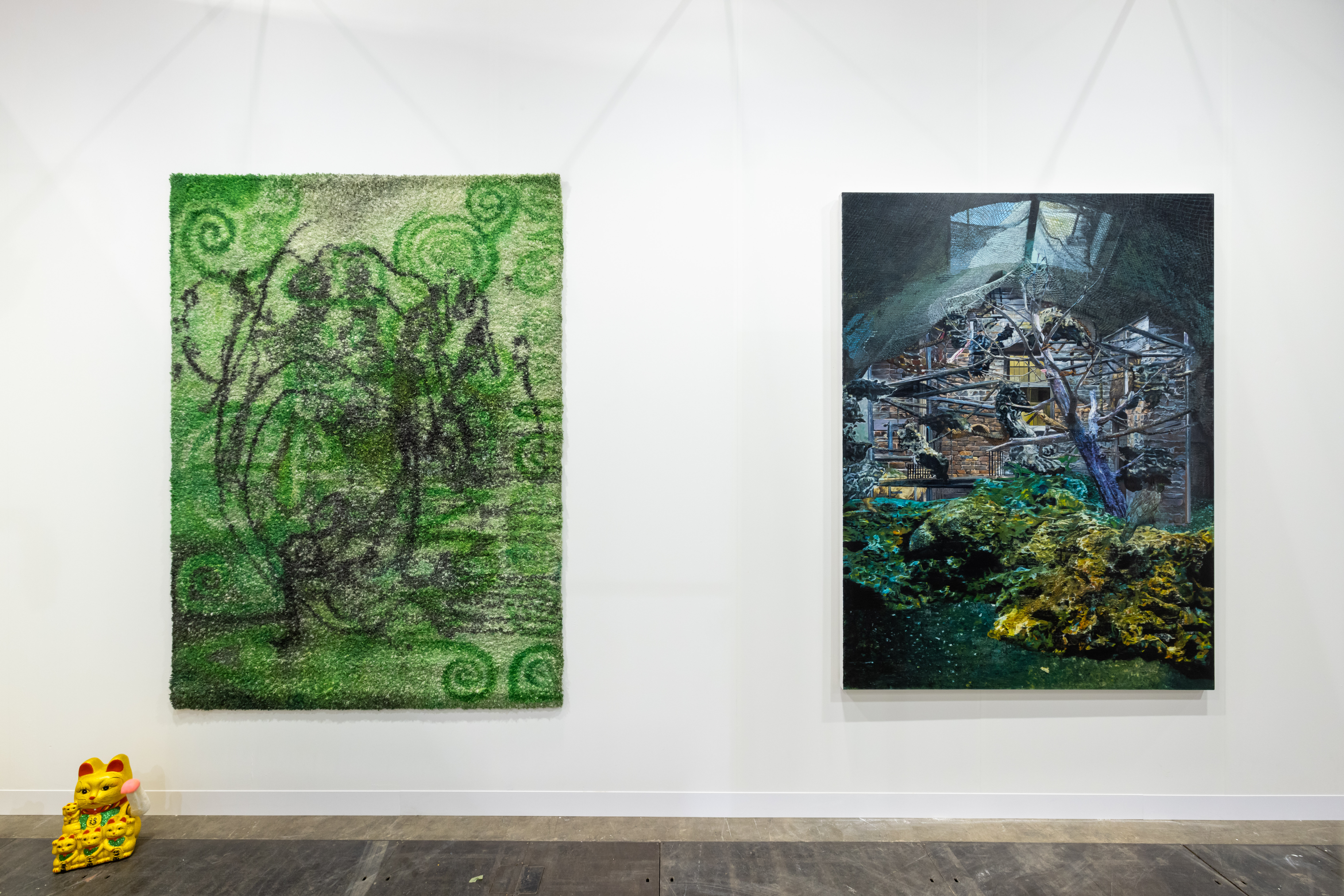
Photo by Wong Pak Hang
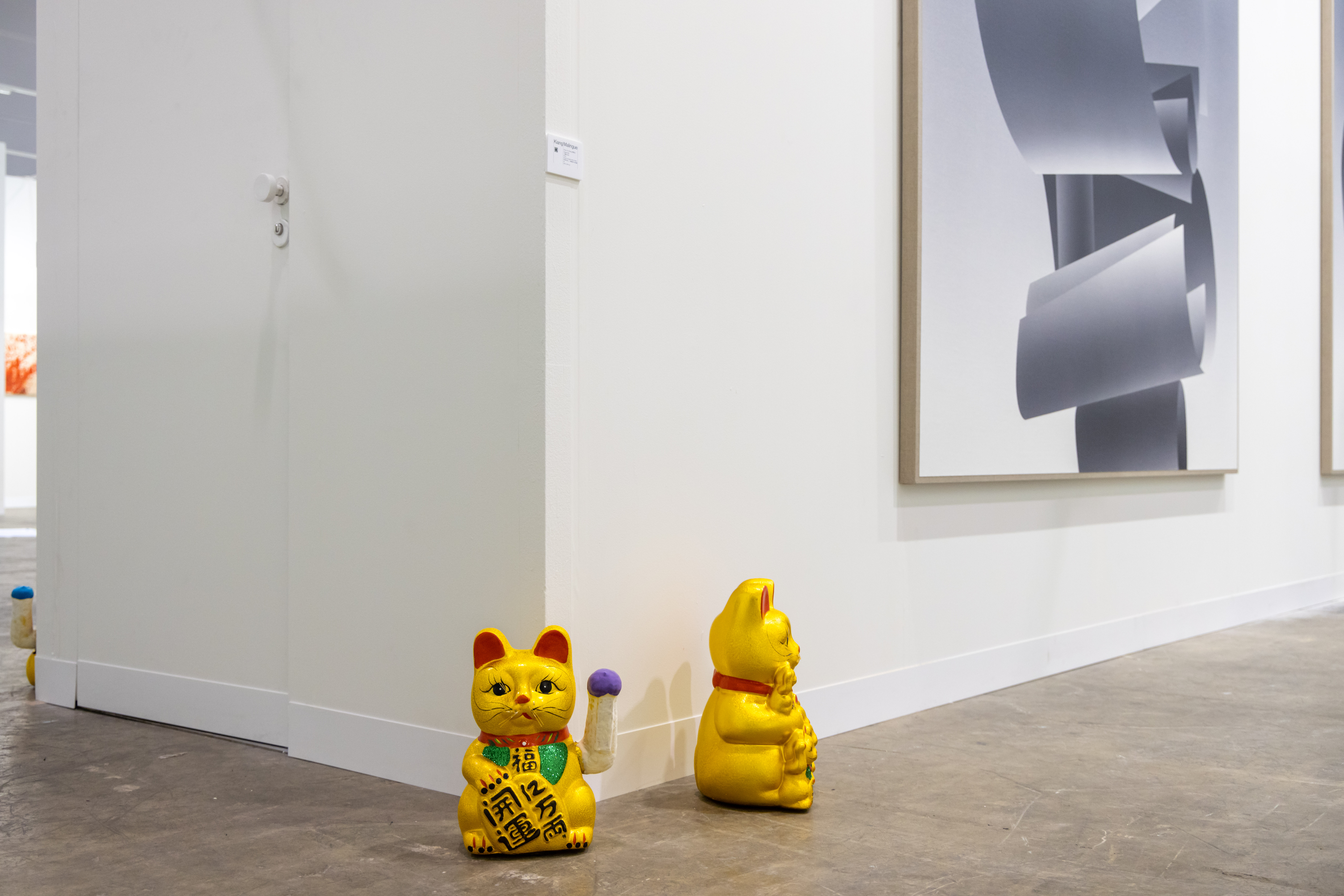
Photo by Wong Pak Hang
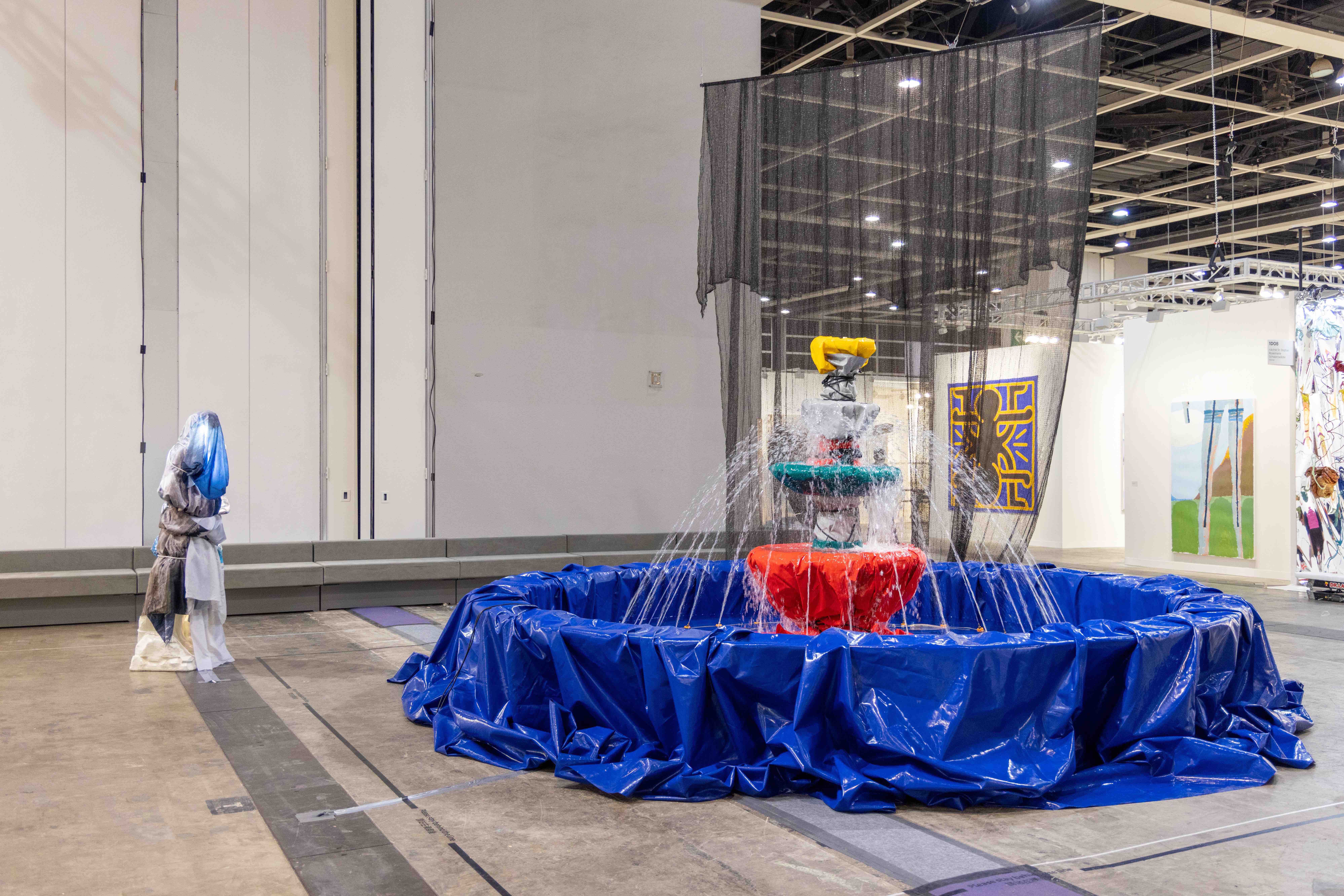
Photo by Wong Pak Hang